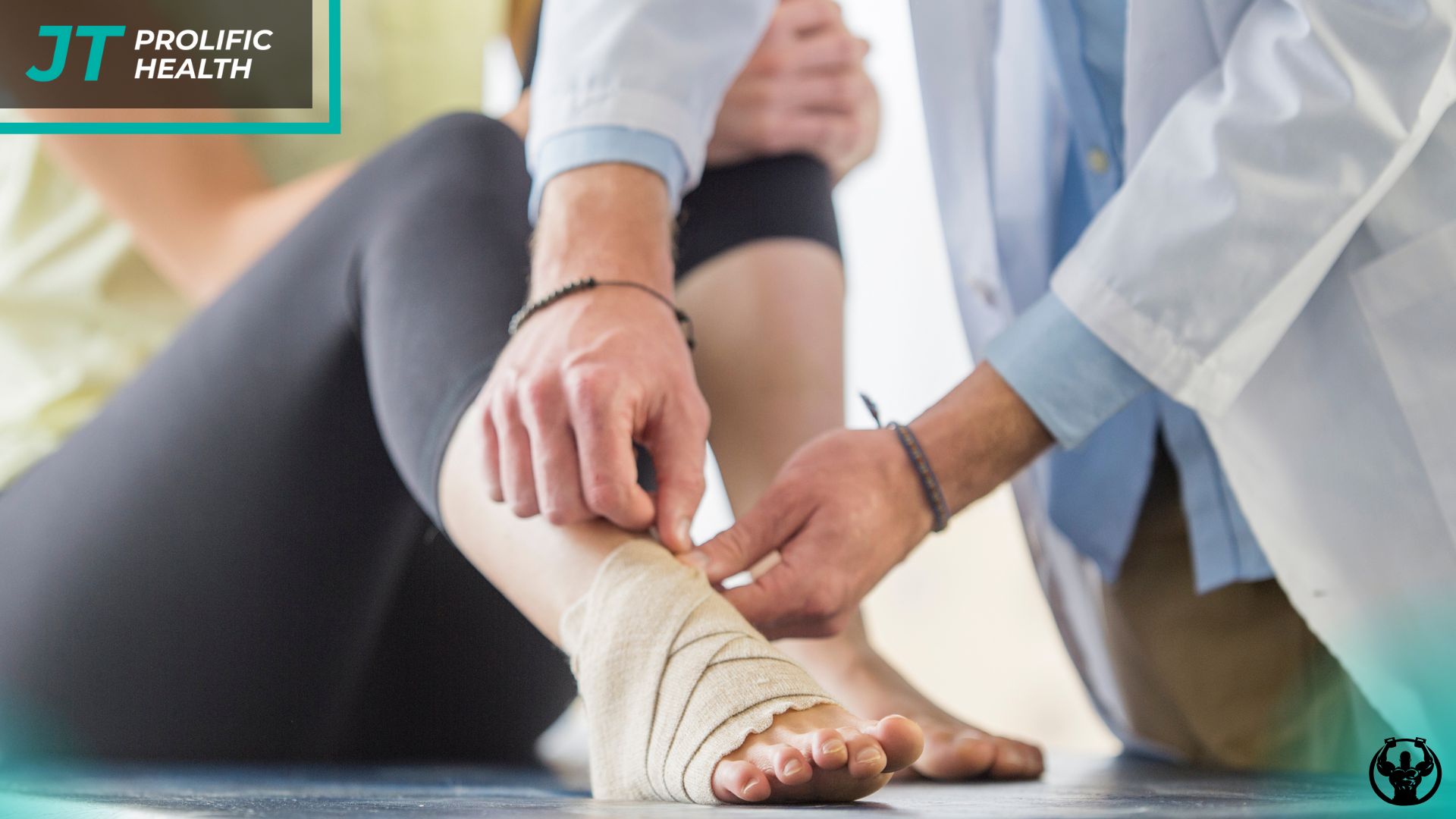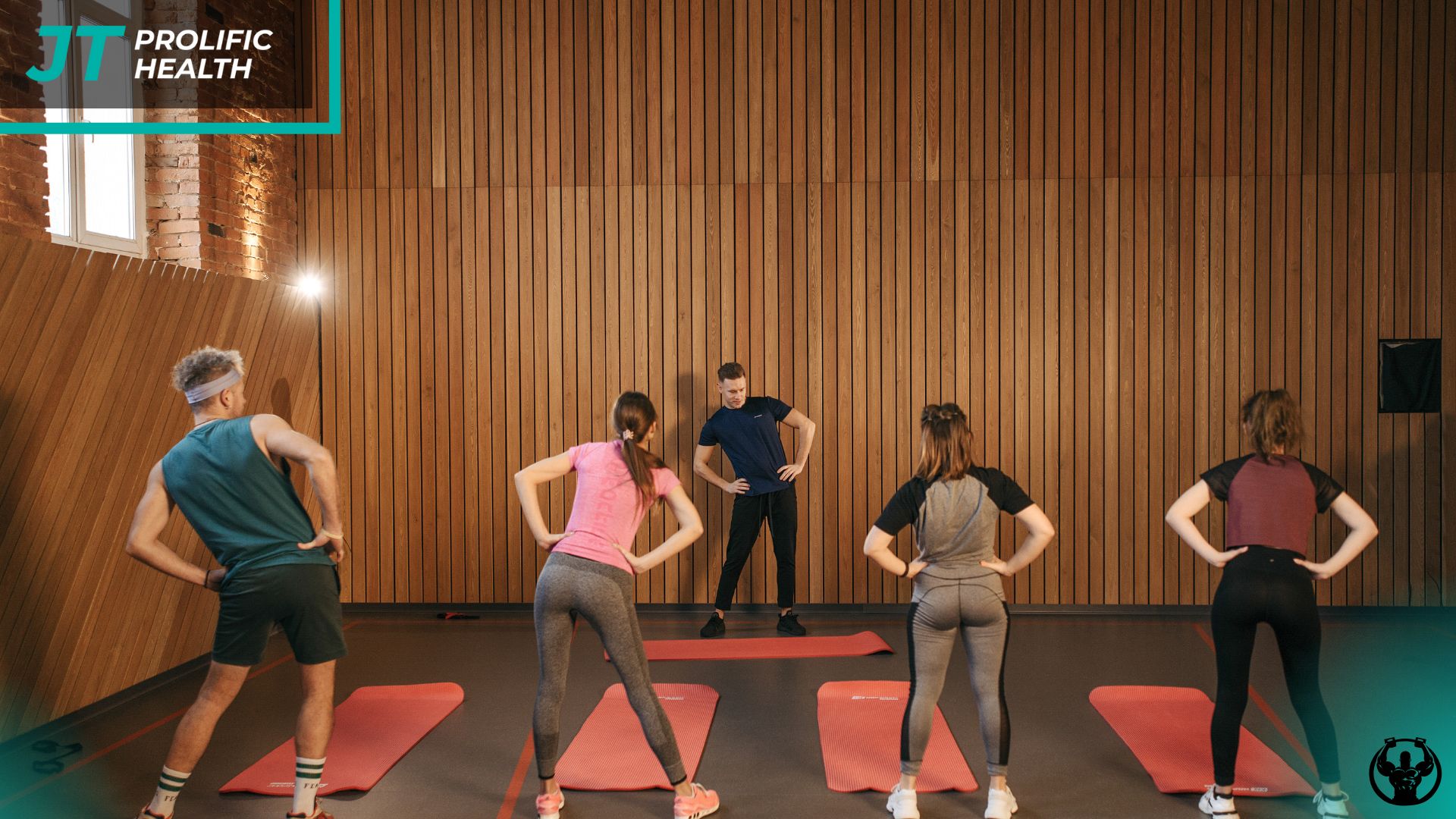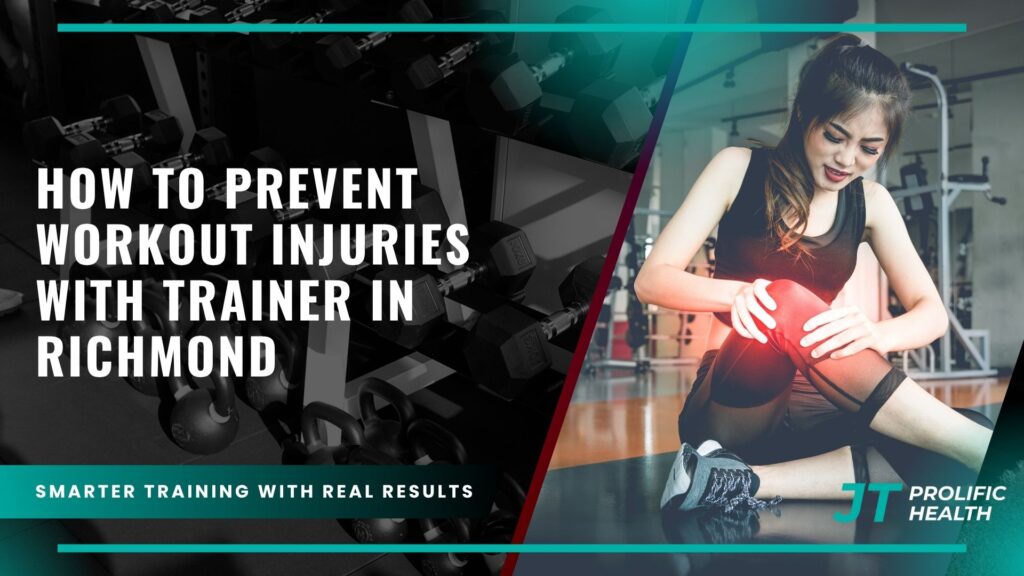Workout injuries can derail your fitness journey faster than any other setback, turning what should be an empowering experience into months of recovery and frustration. In Richmond, where an active lifestyle is deeply embedded in the community culture, understanding how to prevent workout injuries with a qualified trainer has become essential for anyone serious about their health and fitness goals. The difference between a successful fitness transformation and a painful setback often comes down to proper guidance, technique, and injury prevention strategies.
Personal trainers in Richmond play a crucial role in helping clients navigate the complex world of exercise safely and effectively. With the city’s diverse population ranging from busy professionals to active seniors, the need for personalized, injury-conscious fitness approaches has never been greater. A qualified trainer doesn’t just count reps or motivate you through tough workouts – they serve as your first line of defense against the common injuries that plague fitness enthusiasts at every level.
The statistics surrounding workout injuries are sobering. Research indicates that improper form, inadequate warm-up routines, and progressive overload mistakes account for the majority of exercise-related injuries. These issues are particularly prevalent among individuals who attempt to navigate their fitness journey without professional guidance. In Richmond’s competitive fitness landscape, where gym-goers often push themselves to keep up with others, the risk of injury increases significantly without proper supervision and education.
Working with a knowledgeable trainer transforms your approach to fitness from a potentially dangerous trial-and-error process into a systematic, science-based journey toward your goals. They bring years of education, practical experience, and an understanding of biomechanics that allows them to spot potential problems before they become painful realities. This proactive approach to injury prevention not only keeps you safe but also ensures consistent progress toward your fitness objectives.
The investment in professional training guidance pays dividends that extend far beyond the gym walls. When you learn proper movement patterns, understand your body’s limitations, and develop a sustainable approach to fitness, you’re building skills that will serve you for life. Richmond residents who prioritize injury prevention through professional training often find themselves more confident, capable, and committed to their long-term health and wellness goals.
Key Takeaways
For additional context, see this comprehensive guide.
- Professional Assessment is Essential: A qualified trainer begins every client relationship with a comprehensive movement assessment, identifying potential injury risks, muscle imbalances, and mobility limitations before designing any workout program. This foundational step prevents many common injuries by addressing weaknesses proactively.
- Proper Form Trumps Heavy Weight: Trainers emphasize technique mastery over impressive numbers, ensuring clients develop correct movement patterns that protect joints and maximize muscle engagement. This approach builds strength safely while establishing habits that prevent future injuries.
- Progressive Overload Requires Expert Guidance: Increasing workout intensity too quickly is a leading cause of exercise injuries. Trainers implement systematic progression strategies that challenge your body appropriately while respecting recovery needs and adaptation timelines.
- Warm-Up and Cool-Down Protocols Matter: Professional trainers design specific preparation and recovery routines tailored to each workout and individual needs. These protocols significantly reduce injury risk by preparing tissues for exercise and promoting proper recovery afterward.
- Individual Limitations Must Be Respected: Every person brings unique physical considerations, from previous injuries to genetic factors affecting flexibility and strength. Trainers modify exercises and programs to work within these parameters rather than forcing inappropriate movements.
- Education Empowers Long-Term Safety: Beyond supervising workouts, trainers teach clients to recognize warning signs, understand their bodies, and make intelligent decisions about exercise selection and intensity throughout their fitness journey.
Understanding the Role of Professional Guidance in Injury Prevention

For additional context, see detailed information on this topic.
The foundation of effective injury prevention lies in understanding that every individual brings a unique set of physical characteristics, limitations, and goals to their fitness journey. Professional trainers in Richmond recognize this complexity and begin every client relationship with comprehensive assessments that go far beyond simple fitness tests. These evaluations examine movement quality, joint mobility, muscle balance, and previous injury history to create a complete picture of each person’s physical capabilities and potential risk factors.
During initial consultations, experienced trainers observe how clients move through basic patterns like squatting, lunging, and reaching overhead. These fundamental movements reveal compensations, weaknesses, and asymmetries that could lead to injury if not addressed properly. For example, a client who demonstrates limited ankle mobility during a squat assessment might be at risk for knee or lower back injuries if this restriction isn’t addressed through targeted mobility work and exercise modifications.
The assessment process also includes detailed discussions about lifestyle factors that impact injury risk. Desk workers often develop specific postural issues that require targeted interventions, while athletes from other sports may have sport-specific imbalances that need attention. Richmond’s diverse population means trainers must be skilled at identifying and addressing a wide range of physical presentations, from the weekend warrior to the dedicated fitness enthusiast.
Professional trainers understand that injury prevention isn’t just about avoiding acute injuries during workouts – it’s about promoting long-term joint health, muscle balance, and movement quality that supports an active lifestyle for decades. This perspective influences every aspect of program design, from exercise selection to progression strategies, ensuring that short-term gains don’t come at the expense of long-term physical well-being.
Essential Movement Screening and Assessment Techniques


For additional context, see our in-depth resource.
Effective injury prevention begins long before the first rep of any exercise. Professional trainers employ systematic screening protocols that identify potential problem areas and movement dysfunctions that could lead to injury. These assessments form the blueprint for safe, effective program design and help establish baseline measurements for tracking improvement over time.
The Functional Movement Screen (FMS) represents one of the most widely used assessment tools among qualified trainers. This systematic approach evaluates seven fundamental movement patterns that reveal mobility and stability issues throughout the kinetic chain. When a trainer observes compensations during these movements, they can implement corrective strategies before introducing more complex or challenging exercises. For instance, if a client demonstrates poor shoulder mobility during the overhead reach test, the trainer will prioritize mobility work and avoid overhead exercises until adequate range of motion is achieved.
Postural assessment forms another critical component of comprehensive screening. Many Richmond residents spend significant time in seated positions, leading to predictable patterns of muscle tightness and weakness. Trainers evaluate static posture from multiple angles, identifying forward head posture, rounded shoulders, anterior pelvic tilt, and other common deviations. These findings directly influence exercise selection, with emphasis placed on strengthening weak, lengthened muscles while stretching tight, shortened ones.
Joint-by-joint assessment examines the mobility and stability characteristics of each major joint system. The human body follows predictable patterns where mobile joints (ankles, hips, thoracic spine) alternate with stable joints (knees, lumbar spine, cervical spine). When this pattern is disrupted – such as when ankle stiffness forces the knee to become hypermobile – injury risk increases significantly. Trainers use specific tests to evaluate each joint’s function and design interventions to restore optimal patterns.
Balance and proprioception testing reveals deficits in the body’s ability to sense position and maintain stability. These systems become particularly important as we age but are often overlooked in traditional fitness programs. Simple tests like single-leg standing with eyes closed can reveal significant deficits that increase fall risk and injury potential during dynamic movements.
Proper Warm-Up Protocols and Movement Preparation


The importance of proper warm-up protocols cannot be overstated when it comes to injury prevention, yet this crucial phase is often rushed or completely overlooked by individuals exercising without professional guidance. Experienced trainers understand that warming up is not simply a few minutes of light cardio – it’s a systematic process of preparing the body’s tissues, nervous system, and energy systems for the specific demands of the upcoming workout.
Dynamic warm-up routines have largely replaced static stretching as the gold standard for pre-exercise preparation. These movement-based sequences gradually increase heart rate, core temperature, and range of motion while activating the nervous system pathways that will be used during the workout. A well-designed dynamic warm-up might include leg swings to prepare the hips, arm circles for shoulder mobility, walking lunges with rotation for multi-planar movement, and bodyweight squats to activate the posterior chain.
Activation exercises form a crucial component of movement preparation, particularly for individuals with sedentary lifestyles. Many people arrive at the gym with “sleepy” glutes, inactive deep core muscles, and poor scapular control due to prolonged sitting and poor posture. Trainers incorporate specific activation drills like glute bridges, dead bugs, and band pull-aparts to “wake up” these important stabilizing muscles before asking them to function during more complex movements.
The concept of movement rehearsal involves practicing simplified versions of the exercises that will be performed during the main workout. If the session includes deadlifts, the warm-up might progress from bodyweight hip hinges to light kettlebell deadlifts before loading the barbell. This progression allows the nervous system to rehearse movement patterns while tissues gradually adapt to increasing demands.
Individualized warm-up protocols address each person’s specific needs and limitations. Someone with a history of ankle injuries might require additional ankle mobility work, while a client with shoulder impingement needs extra attention to scapular activation and thoracic spine mobility. Professional trainers modify warm-up routines based on assessment findings, previous injuries, and the specific demands of each workout session. For those seeking guidance on finding qualified professionals who understand these nuances, the investment in proper instruction pays significant dividends in injury prevention.
Exercise Technique and Form Correction Strategies
Perfect exercise technique represents the cornerstone of injury prevention, yet achieving and maintaining proper form requires constant attention, feedback, and refinement. Professional trainers serve as skilled movement coaches, using their trained eyes to identify technical flaws that could lead to injury while providing immediate corrections that improve both safety and effectiveness. The difference between exercising with proper form versus poor technique often determines whether someone achieves their goals or ends up sidelined with preventable injuries.
The teaching progression for complex movements follows a systematic approach that builds competency gradually. For example, when teaching the deadlift – one of the most beneficial yet potentially dangerous exercises – a skilled trainer might begin with bodyweight hip hinge patterns, progress to elevated deadlifts that reduce range of motion demands, then gradually work toward full-range movements with appropriate loading. This progression allows clients to master movement mechanics before adding external resistance that could overwhelm their technical abilities.
Real-time feedback and correction represent perhaps the most valuable services a trainer provides. While exercising alone, individuals cannot see their own movement patterns and often develop compensations without realizing it. Trainers provide immediate verbal cues, physical adjustments, and visual demonstrations that help clients understand and embody proper movement patterns. Common cues like “chest up,” “knees out,” or “push the floor away” help clients connect with proper muscle activation and joint positioning.
Video analysis has become an increasingly valuable tool for form correction. Many trainers use smartphone apps or tablets to record exercises from multiple angles, allowing clients to see their own movement patterns and understand the corrections being suggested. This visual feedback often creates “lightbulb moments” where clients suddenly understand concepts that were difficult to grasp through verbal instruction alone.
Load management and progression strategies ensure that technique doesn’t deteriorate as intensity increases. Trainers carefully monitor form quality throughout sets, reducing weight or modifying exercises when technique begins to break down. They understand that maintaining perfect form with lighter weight produces better long-term results than ego-driven lifting that compromises safety. This approach requires working with qualified professionals who prioritize client safety over impressive numbers.
Common movement compensations and their corrections represent a significant portion of a trainer’s expertise. Forward knee valgus during squats might be addressed through glute strengthening and hip mobility work. Excessive lumbar extension during overhead pressing could require core strengthening and thoracic spine mobility improvements. Experienced trainers recognize these patterns quickly and implement targeted interventions that address root causes rather than just symptoms.
Progressive Overload and Load Management
The principle of progressive overload drives all fitness improvements, but implementing it safely requires careful planning, systematic progression, and constant monitoring of the body’s adaptive responses. Too little progression leads to stagnation, while too much too soon results in injury, burnout, or overtraining. Professional trainers excel at finding the sweet spot where clients are challenged appropriately while respecting their recovery capacity and adaptation timeline.
Understanding the different variables of progression allows trainers to manipulate training stress intelligently. Volume (sets and reps), intensity (weight or resistance), frequency (training sessions per week), and density (rest periods between sets) can all be adjusted to create progressive challenges. Rather than simply adding weight every session, skilled trainers might increase reps one week, add an extra set the next, or decrease rest periods to create a training stimulus that promotes adaptation without overwhelming recovery systems.
Periodization concepts help structure long-term progression in a way that maximizes results while minimizing injury risk. Linear periodization might begin with higher volume, moderate intensity training to build work capacity, then gradually shift toward lower volume, higher intensity work as strength and power become the focus. Undulating periodization varies training stress more frequently, preventing staleness while allowing for consistent progress across multiple fitness qualities.
Autoregulation techniques allow for real-time adjustments based on how clients feel and perform on any given day. Rather than rigidly following predetermined progressions, experienced trainers assess readiness through movement quality, subjective energy levels, and performance indicators. If a client arrives feeling fatigued or demonstrates poor movement quality, the trainer might reduce intensity, modify exercises, or focus on recovery-oriented activities rather than pushing through a planned progression.
Deload weeks and recovery phases represent planned reductions in training stress that allow for adaptation and prevent overuse injuries. Many trainers implement systematic deload protocols every fourth or fifth week, reducing volume and intensity while maintaining movement quality and skill practice. These planned breaks often result in improved performance when normal training resumes, as the body has had time to adapt to previous training stresses.
Individual response monitoring helps trainers adjust progressions based on each client’s unique recovery capacity and adaptation rate. Some individuals can handle aggressive progressions and frequent training, while others require more conservative approaches with longer adaptation periods. Factors like age, training history, sleep quality, stress levels, and nutrition all influence how quickly someone can progress safely. The ability to recognize these individual differences and adjust accordingly separates experienced trainers from those who apply one-size-fits-all approaches.
Recovery Strategies and Injury Prevention Protocols
Recovery represents the often-overlooked component of fitness that determines whether training adaptations occur or whether accumulated stress leads to injury and burnout. Professional trainers understand that what happens between training sessions is just as important as the workouts themselves, and they educate clients about evidence-based recovery strategies that support long-term health and performance. At Prolific Health, our trainers emphasize comprehensive recovery protocols that address sleep, nutrition, stress management, and active recovery techniques.
Sleep optimization forms the foundation of effective recovery, as this is when the body performs most of its repair and adaptation processes. Trainers educate clients about sleep hygiene practices, including consistent sleep schedules, optimal bedroom environments, and pre-sleep routines that promote quality rest. Poor sleep not only impairs recovery but also increases injury risk by affecting reaction time, decision-making, and movement quality during subsequent workouts.
Nutrition timing and composition significantly impact recovery speed and quality. Post-workout nutrition windows provide opportunities to optimize muscle protein synthesis and glycogen replenishment through strategic intake of protein and carbohydrates. Trainers often provide basic nutrition guidance or collaborate with registered dietitians to ensure clients are fueling their bodies appropriately for their training demands and recovery needs.
Active recovery techniques help maintain movement quality and promote blood flow without adding significant training stress. Light walking, gentle yoga, swimming, or mobility work can enhance recovery while keeping the body moving. Trainers often prescribe specific active recovery activities based on individual needs and preferences, ensuring that rest days still contribute to overall health and fitness goals.
Stress management strategies address the reality that training stress combines with life stress to impact overall recovery capacity. High levels of psychological stress can impair sleep, increase inflammation, and reduce the body’s ability to adapt to training. Trainers often incorporate stress-reduction techniques like breathing exercises, meditation, or time management strategies to help clients optimize their overall stress load.
Soft tissue maintenance through stretching, foam rolling, massage, or other manual therapy techniques helps maintain tissue quality and joint mobility. While these interventions may not prevent all injuries, they can help identify areas of tension or restriction before they become problematic. Trainers teach clients self-massage techniques and stretching routines that can be performed independently to support ongoing tissue health.
Warning sign recognition empowers clients to make intelligent decisions about when to push through discomfort and when to back off or seek professional help. Trainers educate clients about the difference between normal training soreness and potentially problematic pain, helping them develop body awareness that supports long-term injury prevention. This education often includes information about when to modify training, when to rest completely, and when to consult healthcare professionals for evaluation and treatment.
Frequently Asked Questions
How quickly can I expect to see results while prioritizing injury prevention? When working with a qualified trainer who emphasizes proper form and gradual progression, most clients begin noticing improvements in strength, endurance, and movement quality within 2-4 weeks. While prioritizing safety might seem to slow initial progress, the consistent training that results from staying injury-free actually leads to better long-term results than aggressive approaches that lead to setbacks.
What should I do if I experience pain during a workout? Any sharp, sudden, or concerning pain should result in immediate cessation of the exercise. Your trainer should evaluate the situation, potentially modify the movement, or recommend rest if necessary. Distinguishing between normal training discomfort and potentially problematic pain is a crucial skill that experienced trainers help clients develop through education and ongoing communication.
How important are rest days in an injury prevention program? Rest days are absolutely essential for injury prevention and optimal adaptation. Your trainer should program at least 1-2 complete rest days per week, with the exact number depending on training intensity, your fitness level, and recovery capacity. Active recovery days with light movement can be beneficial, but complete rest allows your body to repair and strengthen tissues stressed during training.
Can previous injuries affect my current training program? Previous injuries significantly influence program design and require modifications to prevent re-injury while working around any lasting limitations. A qualified trainer will assess how past injuries affect your current movement patterns and design programs that strengthen weakened areas while avoiding movements that might aggravate old injuries. This individualized approach is essential for safe, effective training.
What role does nutrition play in injury prevention? Proper nutrition supports tissue repair, reduces inflammation, and provides the energy needed for quality workouts. Adequate protein intake supports muscle recovery and adaptation, while appropriate carbohydrate intake ensures energy availability for training. Many trainers provide basic nutrition guidance or work with registered dietitians to ensure clients are fueling their bodies appropriately for their training demands.
How do I know if my trainer is qualified to help prevent injuries? Look for trainers with recognized certifications from organizations like ACSM, NASM, or CSCS, along with additional education in corrective exercise or injury prevention. Experience working with clients who have similar goals or limitations as you is also valuable. Understanding proper trainer qualifications helps ensure you’re working with someone capable of keeping you safe while helping you reach your goals.
Should I continue training if I’m feeling overly fatigued? Persistent fatigue can indicate inadequate recovery and increased injury risk. A good trainer will assess your readiness for each session and modify training accordingly. If you’re consistently feeling overly fatigued, your trainer should evaluate your program, recovery strategies, and overall lifestyle factors to identify and address the underlying causes.
What’s the difference between soreness and injury? Normal training soreness typically develops 24-48 hours after exercise, affects both sides of the body equally, and gradually improves with light movement and time. Injury-related pain is often sharp, sudden, localized to one side, and may worsen with movement. Learning to distinguish between these sensations is crucial for making appropriate training decisions and knowing when to seek professional evaluation.
Conclusion
Preventing workout injuries through professional training guidance represents one of the smartest investments you can make in your long-term health and fitness success. The comprehensive approach that qualified trainers bring to injury prevention – from initial assessments and movement screening to ongoing program modifications and education – creates a foundation for sustainable fitness that extends far beyond the gym walls. When you prioritize safety and proper progression under expert guidance, you’re not just avoiding injuries; you’re building movement competency, body awareness, and healthy habits that will serve you for decades.
The journey toward improved fitness doesn’t have to be fraught with setbacks, pain, and frustration. By working with experienced trainers who understand the complexities of human movement, individual limitations, and evidence-based progression strategies, you can pursue your goals with confidence and enthusiasm. The initial investment in professional guidance pays dividends through consistent training, steady progress, and the peace of mind that comes from knowing you’re exercising safely and effectively.
Richmond residents have access to qualified fitness professionals who can provide the expertise, accountability, and individualized attention necessary for injury-free training. Whether you’re just beginning your fitness journey or looking to take your training to the next level, the guidance of a skilled trainer can help you navigate the challenges and complexities of exercise while keeping safety as the top priority. Remember that building confidence through proper training extends beyond physical improvements to encompass the mental and emotional benefits of knowing you’re taking care of your body responsibly.
The path to optimal health and fitness is a marathon, not a sprint, and the strategies you learn for injury prevention will serve you throughout your entire active life. By making the commitment to work with qualified professionals who prioritize your safety and long-term success, you’re setting yourself up for a lifetime of healthy, enjoyable physical activity that enhances rather than detracts from your overall quality of life.




